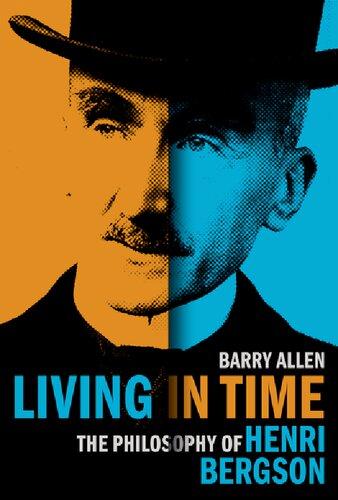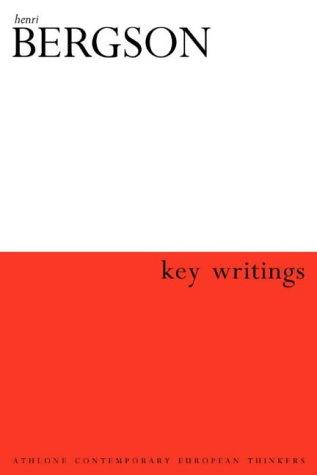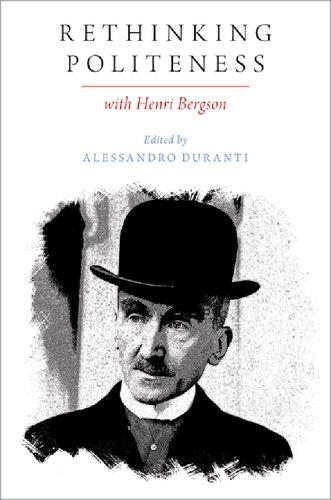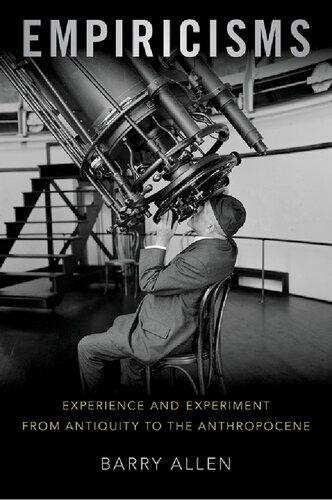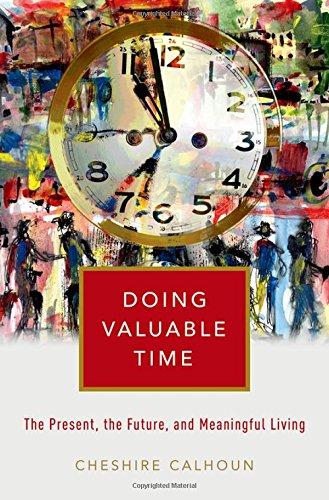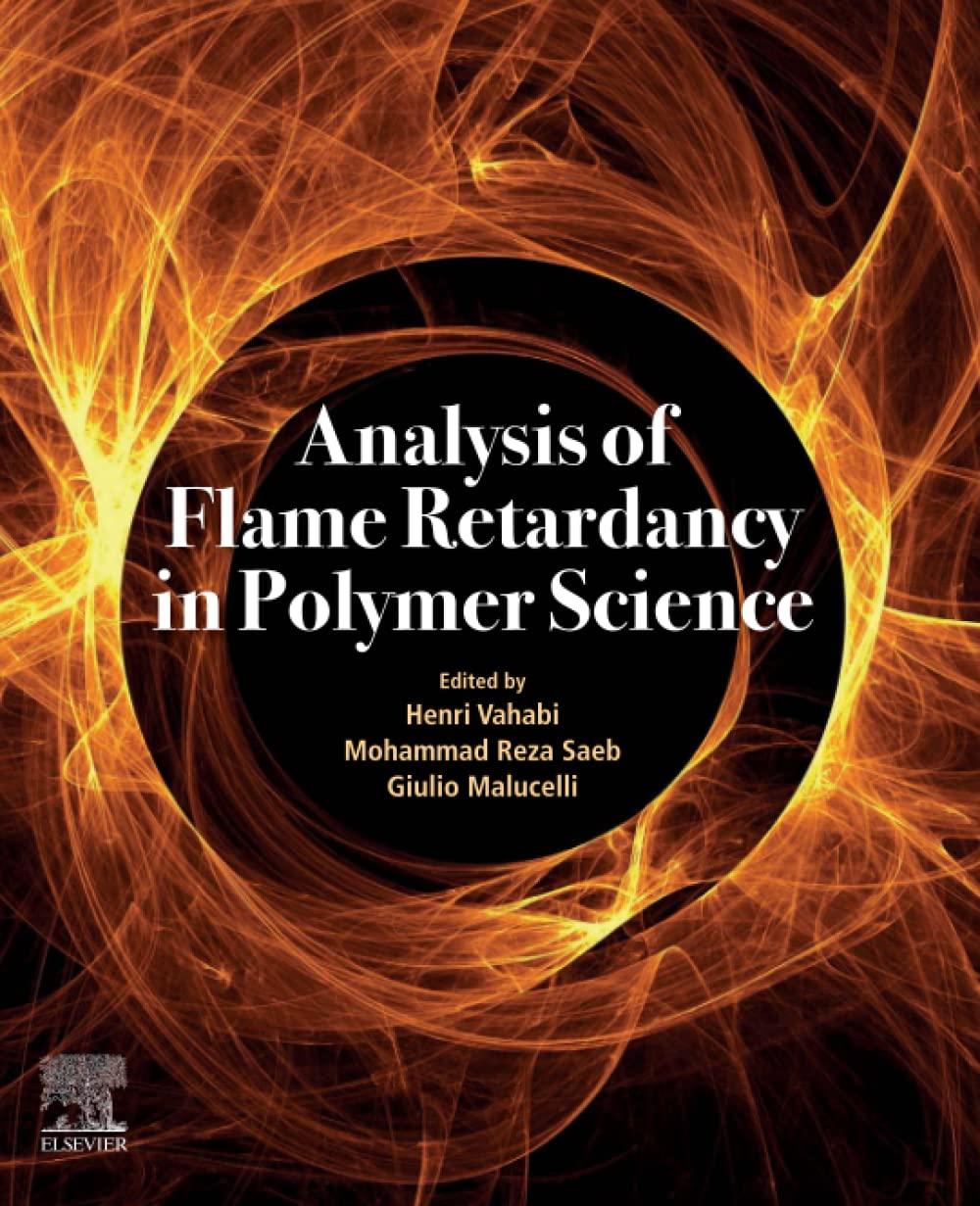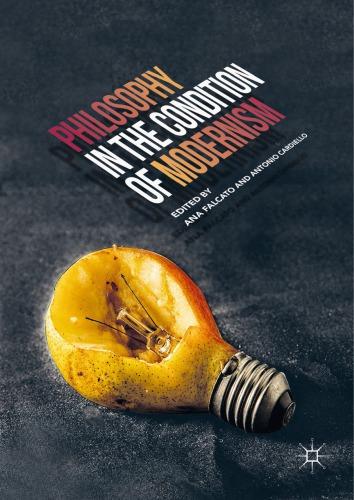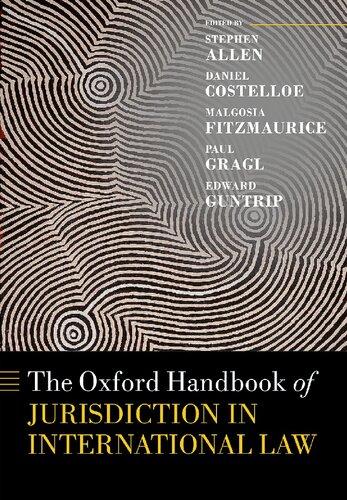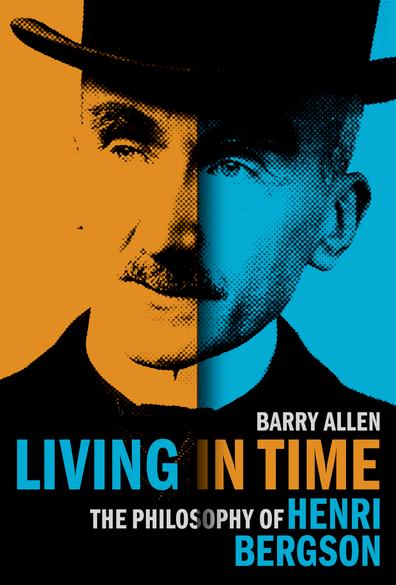Introducing Henri Bergson
Henri Bergson (1859–1941) was for a time the most famous philosopher in the world and one of the few to receive a Nobel Prize for his work. Among Anglophone philosophers, however, he is mostly forgotten, which is a loss, since Bergson was a great philosopher and understanding his ideas would enhance our philosophy with new problems and concepts.
Bergsonism became controversial in the early twentieth century, though from our distance it can be difcult to comprehend the animosity Bergson drew upon himself.1 His work is elegant and analytical, the writing limpid, precise, unmarred by ideology or polemic, all beside introducing important innovations to classical problems of philosophy. Yet he ignited violent emotion on all sides: from the right and the lef, the church and the positivists, materialists and spiritualists. Julian Benda and Jacques Maritain made their reputations with attacks on Bergson. Conservatives welcomed Bergson’s vindication of spirit and despised his naturalization of the divine; progressives applauded his idea of technologically mediated social advance while dismissing élan vital as mystical drivel.
Ensconced at the Collège de France, Bergson endured the unremitting animosity of Émile Durkheim and the Sorbonne, where Durkheim was preeminent. It did not help that critics of Sorbonne philosophy (Charles Péguy, for instance) pointed to Bergson as an alternative. By 1914, at the outbreak of the First World War, Bergson had antagonized France’s entire educational and political establishment, yet by the end of the war, in 1919, the issues that made him controversial were resolved or had collapsed.
His activity during the war as a diplomat, prominent intellectual, and propagandist contributed to coolness from young postwar intellectuals, who “turned against the philosopher of duration and élan vital, whom they had admired in their youth,” and began to fnd his thought “bourgeois, romantic, and self-involved.”2 In 1921, Bergson retired from his academic position and in 1927 was awarded the Nobel Prize for Literature. He died in 1941, a Jew in Paris under German occupation.
At the height of his prestige there was respectable attention to Bergson’s work among Anglophone philosophers, and William James was an early admirer, though here again interest collapsed afer the First War, and it became fashionable positivist signaling to reject Bergson out of hand. Critics with nothing more in common than visceral dislike of Bergson’s philosophy competed to reduce his ideas to a mystical farrago.3 Since then, little has changed.
Living in Time explains, analyzes, defends, and enlarges upon a selection of philosophical arguments in Bergson’s work in a way that I hope may attract the interest of Anglophone readers of philosophy. Tese include his theories of time as duration and panpsychic consciousness, highly original ideas on perception and memory, and his concept of virtual existence.
Chapter 1 is about time, which is the ground motif of Bergson’s philosophy. He criticizes theories that “spatialize” time and unfolds an alternative understanding of time as duration. Bergson, Einstein, and their acolytes had an acrimonious dispute about space and time. Closely considered, though, they disagree on little, and Einstein shares Bergson’s concern about spatializing time. We’ll see Bergson make unexpected use of conclusions about time to refute determinism, a unique argument that does not merit the neglect of philosophers for whom determinism remains a problem. His promise in Time and Free Will is to show that on analysis, the objections to freedom lose all their force, and for the same reason. Tey treat time like space.
Te themes of Chapter 2 draw mostly from Matter and Memory, where Bergson introduces theories of perception and memory that feature his concept of virtual existence. Perception is virtual action and memory is virtual experience. Virtual existence is the mode of being shared among tendencies, dispositions, generalities, and habits, as well as memories, and the past itself, and is among Bergson’s most valuable innovations. Another is his unique theory of memory, which is an alternative to practically everything psychology and philosophy have said on this topic since Aristotle.
Chapter 3 pursues questions from Creative Evolution, Bergson’s most widely read and controversial book. In his frst book, Time and Free Will, he argued (against Zeno) that movement does not instantaneously halt at the points of its trajectory. In Matter and Memory, movement is defned as an indivisible duration, then Creative Evolution says the same thing about organisms. Tey are not complex mechanisms composed of ultimate elements, no more than movement is put together from geometrical points. Organisms are movements, life cycles, temporal entities like a symphony sounding through their material.
Evolution, philosophically considered, includes cosmology, and among theories in the fedgling science, Bergson’s ideas are closest to those of Georges Lemaître and a prototype Big Bang theory. Tis cosmology is fnitistic in time and space and does not allow the universe to come into existence instantaneously or ex nihilo, emerging instead by evolution in a process with a physical sequence. Discussing time and evolution opens a context for comparing Bergson and Nietzsche, as both were pioneers of evolutionary epistemology. Several themes suggest their comparison, including reversing the Platonic priority of being over becoming, and ideas on the human future. Following a hint from Gilles Deleuze, I’ll show how Bergson’s idea of time as duration illuminates Nietzsche’s enigmatic “eternal return of the same.”
Chapter 4 takes up Bergson’s theme of open and closed, chiefy in his fnal book, Te Two Sources of Morality and Religion, though
also drawing on the earlier opuscule Laughter. Closed society, with its closed morality and static religion, is dedicated to the preservation of one group among other, excluded groups. Open society is a cosmopolitan society of humanity with an ethos of aspiration. Bergson regards laughter as an instrument of closed society, which it certainly can be, though it would be wrong to think it is no more than that. Nietzsche is again helpful. Bergson sees practically nothing to laughter but an instrument of social exclusion. Listening to the laughter in Tus Spoke Zarathustra, we hear something more and diferent and not easy for Bergson to accommodate or even acknowledge.
Complaints have been raised against interpretations that attribute to Bergson an “ontological” conception of the virtual.4 Deleuze is the chief ofender and then those (like me) who read Bergson with gratitude to Deleuze. I do not heed the call to deontologize Bergson’s virtual, and in the Conclusion I summarize the ontology of the virtual that unfolds through the chapters. Te reason for retaining an ontological virtual, aside from understanding Bergson, is to accommodate tendencies, capacities, generalities, and habits. None of these are actual, yet all are physically discernable vectors, qualitatively as distinct as their diferent fnalities. Tey exist, they are efective, but are not actual, nor are they mere logical possibilities. Tey are virtual tendencies which, like all beings, strive with all their power to exist. Tis interpretation situates Bergson in a line of thought running from Chrysippus and the Old Stoa to Leibniz.
Bergson is well informed, even accomplished in science, and his philosophy takes science seriously, though he is not an advocate of philosophical naturalism and does not think that philosophy is or should be continuous with the natural sciences.5 Bergson’s philosophy is emphatically not continuous with science. Tis stand is required by two principles he holds on the relation between science and philosophy. Te frst enjoins philosophers never to neglect the value of science as a check on speculation. It is science, specifcally evolutionary biology, that
confrms the utilitarian character of mental functions, which are tuned by natural selection to adaptive action. In a statement that merits the admiration of any philosophical naturalist, Bergson writes, “In the labyrinth of acts, states, and faculties of the mind, the thread which one must never lose is the one furnished by biology” (CM 38). He means evolutionary biology, biology afer Darwin. Mental no less than physical powers are evolved adaptations: “the orientation of our consciousness toward action appears to be the fundamental law of our psychical life” (MM 234). By “action” he means useful, adaptive, practical, utilitarian action, action in the service of life. We can rise above such ends, but they are the default setting.
Bergson ofers this frst principle as a check on the temptation to consider a concept absolutely valid simply because it does useful work in science. Philosophers have a habit of this error and Bergson’s second principle warns against it. Practical ways of thought, especially spatial and quantitative thought, introduce an unconscious utilitarian bias into philosophy that creates pseudo-problems. We come to think concepts are more than contrivances advancing our interest, that instead they disclose nature’s own order. Tis is unconscious anthropocentrism and a fattering fallacy. It is the intellectualism, the rationalism, the metaphysical narcissism with which we reify the cognitive preferences of our contingently evolved neurology. Te same qualities that make intellect adaptive make this anthropocentric rationalism a mistake in philosophy.
As a prestigious critic of rationalism, Bergson endured denunciation as an irrationalist and antiintellectual, though he refused to take his designated place in the critics’ dichotomies. Tey are for intellect and think he is for intuition; they are for reason and think he is irrational; they urge clarity and think he is mystical. Everything positive and creative in Bergson’s thought militates against these dichotomies. He does not want philosophy that is intuitive instead of intellectual. He wants an intellect that is more intuitive and intuition that knows how to think.
Taking Time Seriously
Te philosophy of time does not have to be a specialist topic suitable only for those with technical training in mathematical physics. Bergson is critical of what these specialists have concluded about time, especially when they say that time is just another dimension of space. One still hears this said, although we’ll see that even Einstein, whose authority is usually invoked for the claim, thought this spatialization of time was a mistake.
Bergson’s argument is that time is real and really diferent from space. To say time is real means two things. First, that time is not an abstraction, like a mathematical entity; second, that time is effective, a power of tendency and change. To say something is real is to say it has efects, acting and changing things, and time does that, geology and the evolution of life being the best evidence. If time is real and real means efective, then the past must be real and efective too. Memory is a term for the efectiveness of the past. Memory is not a trace, a record of the past; it is how the past remains efective, that is, real. Rather than pass directly to Bergson’s ideas about time, however, I follow the path by which he led his frst readers to them. Why did time become a problem for him? Te answer begins with a question about the intensity of mental states.
Mental Intensity
Bergson’s way to a philosophy of time passes through his analysis of the error he identifes in conceptualizing consciousness in spatial terms. We do that when we regard mental states as composed of
elements placed in inner space, where they can be counted, even if only in terms of more or less; for instance, “Te pain is more than yesterday,” or “Te Sun is brighter than the Moon.” Statements such as these seem to describe quantitative degrees of sensory intensity. We can only quantify what we can count, however roughly, and we can count only what reduces to a unit and repeats. So, if intensive mental states really have magnitude, there must be a unit of which their diferences are compounded.
Herbert Spencer introduced a theory on this in his infuential Principles of Psychology. Even the most strongly contrasted sensations are said to be aggregates of a single primordial consciousness-element: “Such homogeneous units of feeling may, by integration in diverse ways, give origin to diferent though relatively simple feelings; by combination of which with one another more complex and unlike feelings may arise.”1 What is the unit? At this dramatic point Spencer’s account gets thin. He alludes to nervous shock but says no more about it. Te lacuna was overlooked because Spencer spoke for many who wanted a quantitative science of psychology in the day when psychology was still defned as the science of consciousness. Bergson’s counterargument is that a homogeneous unit does not exist, nor do quantitative diferences of magnitude exist in consciousness.
We use a body to measure a body, as when a ruler is laid on something and used to quantify length. Nothing like that is possible with consciousness, whose moments cannot be juxtaposed like bodies. Something spatially greater than another can contain it, but mental containment does not make sense. Tiny fakes of gold add up to an estimable lump, but how could lots of barely conscious pains add up to migraine, or explain its diference from charley horse? No simple relation exists between the intensity of mental states and a measurable magnitude in their cause, as if light would seem twice as bright with twice the luminous energy. Sensation is not so simple. Anyway, we go by feeling in decisions on sensory quality, not by an intellectual surmise about the cause.
No verifable connection relates the intensity of mental states to quantifable neurological parameters, as if a more intense pain activated more T-cells, energized more c-fber, drew down more phosphorous ions, something like that. Te neurological connection, if it exists, is hypothetical and would have to be verifed. To test it we would have to correlate neurological parameters with changing mental intensity. How could we determine that doubling some neurological parameter produced a sensation twice as intense? Before researchers could correlate changes in the neurological parameter with more painful pain, they would require a measure of pain magnitude. So, the only way to verify the neurological correlation requires that we already have the result we need to verify. Te appropriate conclusion is that this mind–brain correlation, though widely credited, is imaginary and incapable of being scientifcally established.
Another example of specious quantifcation is mental efort. Bergson recounts investigations by William James of paralytics asked to try to move their disabled limbs (TFW 22–24). James observed that while the afected limb did not move, other parts of the body moved a lot. Muscles contracted all over, breathing changed, more sensitive measures would detect additional small movements. James proposed that our consciousness of efort is an awareness of this whole-body mix of direct and associated muscle movements, and Bergson agrees. Te magnitude of mental efort, trying harder and harder, is a specious quantitative interpretation of an enlarging series of sympathetic muscular contractions spreading over a fexible expanse of the body’s surface, creating constantly renewed sensations of tension, pressure, and fatigue.
Bergson extends the account to afective sensations of pleasure and pain, which have most attracted the quantifers’ attention. He explains a greater pleasure as a pleasure more preferred, where magnitude of preference is magnitude of anticipatory corporeal response to the prospect of enjoyment: more organs, more muscle groups, more glands and secretions, the whole body anticipating
the treat. As for pain, it is partly the feeling of bodily damage, though there is more to it. In many animals the reaction to damage is refexive and without sensation. Drop acid on a microbe and it reacts to preserve itself. Te reaction is automatic, mechanical, determined. Tere is no sensation, no pain, which would be superfuous. Te organism has no alternatives, no choice to make, hence no pain.
We do not have to have pain for an organism to respond adaptively to damage, so why the sensation at all? Bergson thinks it indicates the evolutionary emergence of choice. What we feel as an intensity of pain is consciousness of involuntary reactions under preparation, providing an opportunity to suppress, select, or modulate them. Feeling the sensation, one is aware of the looming requirement to act. Tere is an interval during which memory comes to bear and a preferable response can be selected from alternatives remembered or imagined. Here is the humble beginning of the feeling of freedom: “Either sensation has nothing to do, or it is nascent freedom” (TFW 34).
A more intense heat is a diferent heat, though the feeling of moving one’s body near and away from a source suggests a quantitative interpretation. Physics tells us there are more vibrations in a high pitch than a lower one, but we do not hear their quantity, which is abstract information and cannot explain our impression of high and low. What Bergson thinks does account for it are diferences of efort in the musculature of the throat and chest. We interpret the intensity of sound by imagining the efort we would have to expend to mimic it. We know from the experience of our own voice that high notes require more energy. When we hear a pitch “rise,” we imagine feeling the efort our voice would have to make to imitate the tone.
Terms of intensity can still apply to mental states provided we understand that there are no magnitudes and nothing to quantify: “Te intensity of a simple psychic state is pure quality” (TFW 225). When desire grows greater, nothing doubles or triples like
voltage in a circuit. A stronger desire is a diferent desire, a worse pain is a diferent one. No matter how fnely sliced, every conscious moment is qualitatively diferent, the heterogeneity never fnally diminishing into Spencer’s hypothetical homogeneous unit. Bergson’s term for this defnitively temporal quality is “pure heterogeneity” (TFW 104). I will also call it original or primitive heterogeneity. Tis is not the heterogeneity Spencer thought evolution was advancing toward as a cosmic telos. It is the opposite, a heterogeneity at the beginning, an originally given multiplicity of qualitative diference. Original heterogeneity means there is no end to the diferences. Divide and distinguish all you will, there is always more and diferent. Consciousness is an example of this heterogeneity, diference within diference endlessly. Original heterogeneity is also characteristic of time understood with Bergson as duration. Divide any duration and the result is always a diferent present with a diferent past.
Consciousness is continuous, not divided into blocks or states. It is language that breaks up consciousness this way. Language can only express thoughts whose parts are as distinct as words, and reasoning with words is like arranging blocks in space. Tat makes language clumsy with the fligree of feeling the impersonal designations of ordinary usage (“love,” “fear”) convey. “Love” is one word but the emotion is as diferent as people are. We use this psychological vocabulary less for information than ritual, confrming assumptions about ourselves and others. Te use of common nouns to describe consciousness is required for smooth social life, but philosophically, each moment of consciousness has a singular past, which makes it qualitatively diferent from every other. To express such diferences with language is hopeless and poetry is its art.
Intelligence meticulously distinguishes and separates, decreeing sharp edges, discovering dichotomies, savaging continuity. Such analysis can be useful, in science it is indispensable, but philosophy has misunderstood its utility in a way that has created pseudoproblems, including the problem of determinism. Bergson’s
promise in Time and Free Will is to show that on analysis, the objections to freedom lose all their force. His conclusion is not a proof of free will, something he considers superfuous, as no one would wonder whether their will was free without the bugbear of determinism to trouble them. It is enough to know that putative proofs of determinism are fallacious and all for the same reason. Tey fail to take time seriously.
Spatial Tought
By regarding consciousness as if it had magnitude, we treat it like a body in space. To quantify, even roughly, is to render countable and to count things is to juxtapose them in space if only imaginatively. Quantity is a spatial concept, promoted by experience with bodies in space, including their movement. We think in terms of number because things move, and they move in space, which is where we count them. We can generate numbers by successive construction: 1 + 1 + . . . will produce any (whole) number. Te operation may seem temporal, as it did to Immanuel Kant: “Arithmetic attains its concepts of number by the successive addition of units in time.”2 Tis is inadequate, however, because in time we perceive only the succession, not the addition, not a succession that culminates in a sum. We have to imagine mentally holding each unit as we add another to it, and that is a spatial operation, an analogy with bodies in space.
Bergson thinks the fundamental intuition of number or quantity is spatial juxtaposition, which expresses space’s most spatial quality, the mutual externality of its points. He does not identify number with space (as Bertrand Russell fallaciously assumed).3 Instead, he observes that a condition on quantifcation is for elements to be denumerable, which presupposes spatial qualities of distinctiveness, separability, and discontinuity, even if it does not require that the elements be laid out in space. Spatial points cannot blur
into each other or interpenetrate; every point excludes every other, consequently every line, every surface, every volume, every body in space, is external to every other. Tere is no continuity of spatial bodies, only juxtaposition. Tat no two bodies occupy the same space has been attributed to a so-called principle of impenetrability. One body cannot penetrate another; it can displace it, divide it, or shatter itself on it, but it cannot interpenetrate and cohabit one space.
Spinoza and Leibniz thought impenetrability was a metaphysical insight into the essence of body, though even if it were, we should be able to imagine multiple bodies in the same place, as we imagine other physical impossibilities, like a frictionless surface, a laminar fow, or a spherical star. Tat does not work with impenetrability. Imagine two bodies exactly the same size and shape, together in one place, each having exactly the same coordinate relations to everything around them. Why speak of two? Could one be red and the other blue, one electrically positive, the other negative? No, we cannot think this multiplicity.4 Rather than a metaphysical power of bodies, impenetrability is an implication of number’s spatial logic. You cannot have two bodies in one space because one is what we count in one place. We have two of anything only in two places. When we think of mental states as intensive magnitudes, we think of them quantitatively and that means spatially, treating consciousness as if it were a space in which particles (successive mental states) circulate. Bergson uses the technical word endosmosis to describe this psychological tendency (TFW 109). Endosmosis is a term for the passage of a chemical across a membrane from a region of lower to higher concentration. What happens to space is like that. It is drawn inside consciousness to reappear as an inner space of particulate ideas or impressions. Te use of language entrenches spatialization by suggesting unities corresponding to words, ignoring unnamed diferences, and assimilating disparate feelings under the same word. I’m angry and so are you. We use the same word but can’t mean the same feeling, which would be impossible given our
diferent histories. Every moment of sensation is qualitatively different, which we do not notice when the diferences are irrelevant to the business at hand. We substitute the word for the thing and reduce experience to cliches. In his philosophy of art (in Laughter) Bergson argues that the value of art is its capacity to penetrate the veil of cliche and apprehend the individuality of things (Chapter 4). Te cost associated with this social adaptation is not merely to be misled about consciousness, our own and others’. It promotes the decay of freedom. Human evolution endows us with the requirement of social life and with social instincts that smooth the way. One of these is to habituate to a social self enacting ritualized behavior and cliche responses, a self captured by conformity and adapted to social life. Freud called this das Ich, Ego. On Bergson’s account, it arises when a “profound self,” profoundly individuated (and without Freudian analogue), becomes overlain by cliches, submersed in common sense, and habituated to a regimen others fnd reassuring, banishing remnant individuality to dreams. Spatialized consciousness is practically homogeneous, described and enacted as homogeneous, which tends to make us homogeneous. It makes our minds more alike than they might be, expressing what Nietzsche called our herd instinct. As a result, less and less of what we choose is truly free, not because of mechanical determinism, but from regimentation and conformity. Te threat to freedom lies here and not in metaphysics.
It is not an accident that we favor the spatial mode of thought, as we may suppose that such thinking was adaptive for evolutionary ancestors. Concepts of space and number are tools for coping with change. We attend to the immobile, static, and changeless because it is at such points that we can act on matter. If you want to act on water you have to contain it, give it shape, make it somewhat solid. As long as it fows, we cannot act on it or even calculate it, given the chaotic tendency to turbulence. We plan and act from point to point, following a line of means to ends. Te habit of point-to-point thinking encourages the idea
of any movement as passing from one state to another—[state1] click [state2] click. . . . Tat happens in computers, though before computers Bergson saw it in cinema. He says he worked out his ideas on cinematography in 1902–03, which is well before narrative cinema (CE 272). He was chiefy aware of the use of cinema for the analysis of motion in the work of Étienne-Jules Marey and Eadweard Muybridge. A series of instantaneous snapshots generates the illusion of movement. Tere is no movement in the images, each being a changeless synchronic state. Te only movement is in the apparatus, where a motor conveys a series of snapshots past a projector with insensible speed.5
In a 1914 discussion of cinema, Bergson says, “When I frst saw the cinematograph I realized it could ofer something new to philosophy. Indeed, we could almost say that cinema is a model of consciousness itself. Going to the cinema turns out to be a philosophical experience.”6 Bertrand Russell says he made his frst visit to a cinema to verify Bergson’s statement, which he found to be “completely true”: “Te cinema is a better metaphysician than common sense, physics, or philosophy.”7 However, it was not without irony that Bergson recommends cinema as a model of consciousness, for it is a model of misperception and the tendency of consciousness to objectify and externalize itself. Te cinematographic analogy that works for machines and planetary systems is wrongly applied to organisms simply because nothing can live cinematographically. We cannot pass in and out of existence so rapidly that no one notices, ourselves least of all, as room-lighting insensibly fickers at 60Hz. Life is real continuity, which implies temporal interpenetration and succession without separation. Cinematography ofers real separation and succession without interpenetration; next does not grow from former but is merely juxtaposed, external, like points in space.
Russell is under the infuence of the unconscious utilitarianism I mentioned in the Introduction, equating the convenience of calculation with a principle of reality. If you want to control moving
bodies, think like Russell and consider them cinematographically. Te cinematographic tendency of thought is the tendency to conceive of change as a series of potential halts where action might intervene, and that is how we usually perceive our environment; we see not “things” but rather what psychologists call afordances, meaning stabilities suitable for interaction.8 Cinematographic thought, which analyzes processes in terms of potential halts, is good for the adaptive challenges an animal like us faced half a million years ago. It is no mistake to use it; a tool may be inefcient but not wrong. A mistake arises only when we think that our tool is so useful it must express the truth of nature.
Te slide into cinematographic thinking is perhaps the gravest error philosophy has sufered from unconscious pragmatism. We can act only on discontinuous bodies, and it is such action that intelligence and concepts aim to enhance, which makes movement’s cinematographic representation appealing. Tat is how we like to think of movement in pursuit of mastery over it, and that is how we will think of movement unless prodded from unconscious bias. Te cinematographic tendency of perception and thought is a biased interpretation of practices by which people have lived from before the frst stone tool. Bergson calls it “the natural metaphysic of the human intellect” (CE 326). Te Greeks did not need our experience of cinema to think cinematographically about nature, as Zeno demonstrates with his famous paradoxes of motion.
Zeno of Elea was a ffh-century BCE follower of Parmenides who made a famous defense of the master’s monism. Parmenides had argued that Being is. Only Being is, nonbeing is not. Among the wonderful consequences of these seeming platitudes is the impossibility of movement, which requires void, for nothing can move to a place that is full. But since nonbeing cannot be, every place is full; so there is no void and no motion. Te logic is impeccable and still people laugh. Zeno thought he might enhance the teaching by exposing contradictions in the popular idea of motion. Apparently,
he developed many arguments, though accounts of only a few survive. One is called the Arrow.9
An archer lets an arrow fy. Many in Zeno’s audience would have muscle memory of performing this very action, though now Zeno tells them they were dreaming, their arrows did not move, they didn’t even draw their bow. An arrow cannot move in the place where it is not—if it is not there, it assuredly is not in motion there. Neither can it move in the place where it is; for this place is precisely equal to the arrow’s dimensions, and a thing at a place equal to its dimensions is at rest there. Te arrow is always at the place where it is, and cannot move where it is not, so it is always at rest. Te argument may have been more dizzying to an ancient audience because we think of velocity as a conserved quantity, the principle of inertia. If something is moving, it might move to a place where it currently is not. Te ancient philosophers did not have this principle or its intuitions, which must enhance the specious rationality of Zeno’s argument. How could the arrow be where it is not? How could it get there from where it is? Surely it never leaves where it is!
Te argument exposes the difculty of conceptualizing continuity. Te discrete and discontinuous are appealing to practical reason, which pursues distinctions and discovers dichotomies, transforming the continuous into analytical discontinuity and pronouncing it clear and distinct. When we treat movement that way, however, we lose it. Zeno’s argument makes the same mistake by confating a movement, which is a phenomenon of duration, with a geometrical line, a spatial concept. Te geometrical properties of a line are not properties of the movement, which is a temporal, not spatial entity. Te trajectory that a movement, now fnished, passed through is an infnitely divisible line, but that does not mean the movement was divisible or had parts. A line can be divided and put together any way we like, but not a movement: “Tough we can divide at will the trajectory once created, we cannot divide its creation, which is an act in progress and not a thing” (CE 336).
Zeno assumes that the arrow coincides with the instantaneous positions of its trajectory, even though it never is at any of those points. Te most we can say is that it could be stopped there, which is a statement about us and how we might act on the arrow. Zeno’s mistake is everybody’s mistake and it is not entirely a mistake. We think of motion geometrically because doing so enhances action. We analyze movement in terms of potential interaction, attending to where it can be halted, prolonged, or redirected. Geometry makes such thinking efcient: “Homogeneous space concerns our action and only our action, being like an infnitely fne network which we stretch beneath material continuity in order to render ourselves masters of it, to decompose it according to the plan of our activities and our needs” (MM 308). Tat is a useful result, but to impute the conventions of a convenient calculus to the movement it describes makes a fetish of our symbolism, as if its utility could only be explained by adequacy to the inner nature of bodies.
Why is thought so tenaciously spatial? Bergson’s explanation is evolutionary: “Our tendency to form a clear picture of this extensity of things and the homogeneity of their medium is the same as the impulse which leads us to live in common and to speak” (TFW 138). Spatialization may appear to be something we learn, but Bergson thinks “it is native to the human mind; we practice it instinctively. Its recipe is deposited in language” (DS 54). He is not the only one to notice the relation between language (hence sociality) and spatialization, though he may have been the frst. German linguist Walter Porzig observes that “language translates all nonvisual relationships into spatial relationships. All languages do this without exception, not just one or a group. Tis is one of the invariable characteristics of human language.”10
French philosopher of science Émile Meyerson, a young contemporary of Bergson, thought that spatialization expresses an “eternal and immutable tendency of the human mind,” namely, to shun novelty and crave identity and repetition.11 He thinks the prestige of rational explanation in European philosophy arises from reason’s
power to eliminate diversity by discovering identity everywhere. Tis animus against diference is not empiricism or pragmatism, which on the contrary favor discrimination and foresight. It is irrelevant to practice to be told that fundamentally nothing changes, but rationalists fnd it sublime.12
Duration
Worse than spatializing consciousness is spatializing time. We do that when we assume that like space, time is a continuous series of mutually external points. Tis is a mistake because it eliminates the interpenetration and temporal anisotropy that are characteristic of time and its diference from space.
I should ensure that we understand Bergson’s term duration (durée). Tis is the time of consciousness, the time of experience, the time of waiting, expecting, and delay. It is the time that prevents everything from happening all at once, the time that makes nature processual and the cosmos evolutionary. Bergson’s idea is that time has no other concrete, primary reality than duration, which is time’s mode of being, whether in consciousness or in the cosmos: “Real duration is what we have always called time, but time perceived as indivisible” (CM 124); “the more or less lengthy changes we witness within us and in the external world take place in a single identical time” (CM 125). Te facile distinction between subjective psychological time and objective scientifc time exasperated Bergson. He encountered it in Einstein’s testy reply at their Paris meeting. “Te time of the philosopher,” Einstein said, “is both physical and psychological at once, [and assumes that] physical time can be derived from the time of consciousness. . . . [But] the philosopher’s time does not exist; there is only a psychological time, diferent from the time of the physicist.”13
In Duration and Simultaneity, from later that year, Bergson argues that psychological and physical time intertwine no matter
how methodologists strain to segregate them. A later philosopher of time (and no Bergsonian) confrms Bergson’s point: “If what we mean by ‘time’ when we talk of the time order of events in the physical world has nothing to do with the meaning of ‘time’ as meant when we talk about the order of time in our experiences, then why call it time at all?” Why indeed, especially since, “if the ‘time’ of physics is not real, perceived time, then the ‘causation’ of physics is not real causality.”14
Another unhelpful idea to set aside is the distinction between so-called A-series and B-series time. In Te Nature of Existence, British philosopher J. M. E. McTaggart introduced these two temporal series, two formally diferent orders of events.15 Te A-series is a tensed order of past and future with an ever-new now. Since the past is always growing, relations among events in the A-series are always changing, with yesterday’s tomorrow becoming tomorrow’s yesterday. To McTaggart that was a problem, as one event cannot be both tomorrow and yesterday. He decided that A-series time is inconsistent and unreal. Te B-series is time for classical physics: a linear order represented by a line on which each point is an instant and an event. No now-moment hovers over the series, and any event that occurs before another always does so by an unchanging interval.
Replies have been made on behalf of A-series time, but even if some A-series theory were made consistent, it is not a good theory of time and for a simple reason. A-series time does not express or model temporal passage. McTaggart’s idea is that time, all time, can be conceptualized in his two ways. All the events of time are already given in their order of succession and the question is how best to describe their series, whether in tensed or tenseless terms. However, to assume that all the events of time are given assumes that future events are already on the line and waiting for us to reach them. B-series time makes the same assumption, namely, that events take position in time independently of their having occurred. Tis is fallacious because future and past events do not
